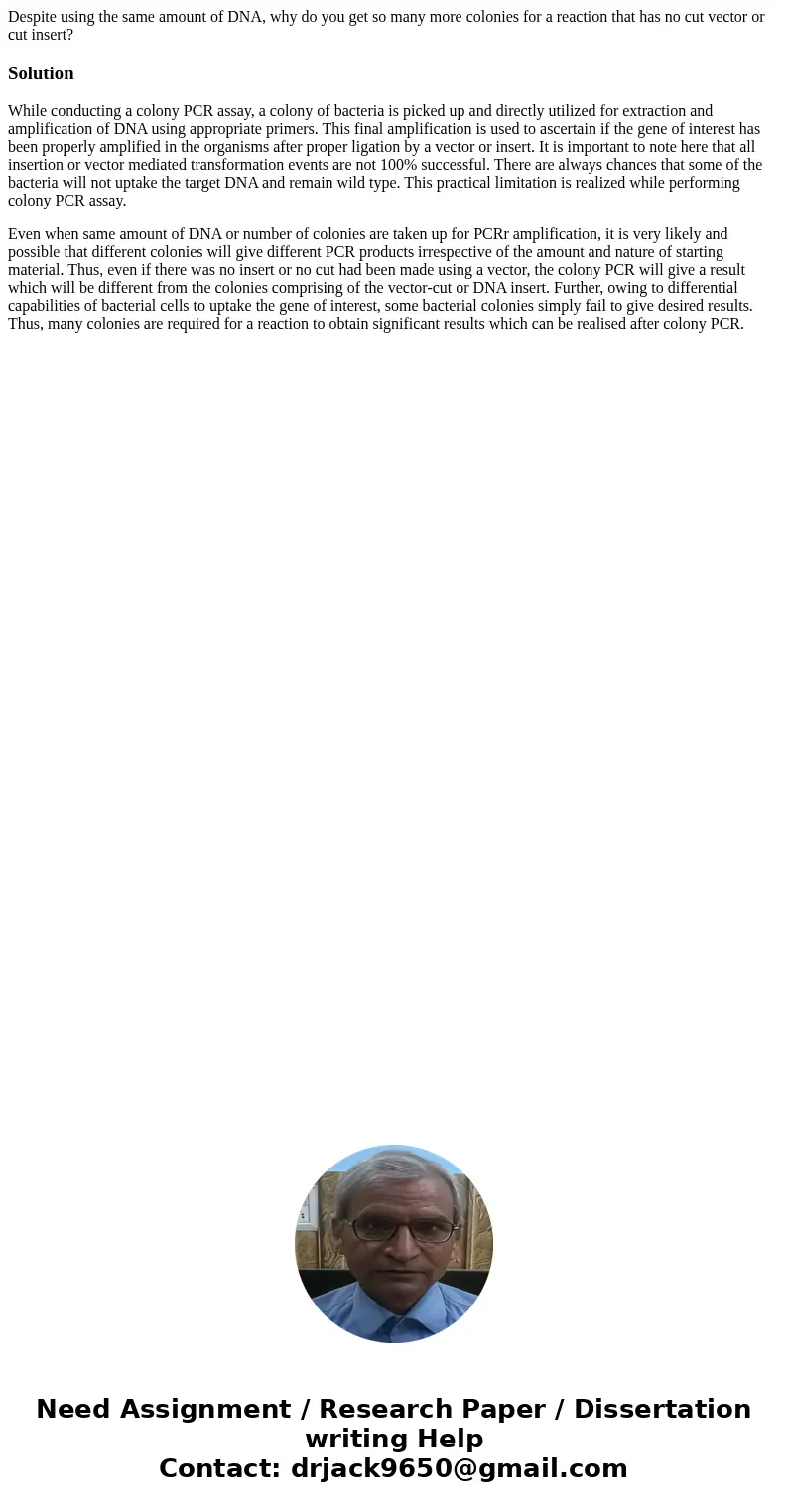Despite using the same amount of DNA why do you get so many
Despite using the same amount of DNA, why do you get so many more colonies for a reaction that has no cut vector or cut insert?
Solution
While conducting a colony PCR assay, a colony of bacteria is picked up and directly utilized for extraction and amplification of DNA using appropriate primers. This final amplification is used to ascertain if the gene of interest has been properly amplified in the organisms after proper ligation by a vector or insert. It is important to note here that all insertion or vector mediated transformation events are not 100% successful. There are always chances that some of the bacteria will not uptake the target DNA and remain wild type. This practical limitation is realized while performing colony PCR assay.
Even when same amount of DNA or number of colonies are taken up for PCRr amplification, it is very likely and possible that different colonies will give different PCR products irrespective of the amount and nature of starting material. Thus, even if there was no insert or no cut had been made using a vector, the colony PCR will give a result which will be different from the colonies comprising of the vector-cut or DNA insert. Further, owing to differential capabilities of bacterial cells to uptake the gene of interest, some bacterial colonies simply fail to give desired results. Thus, many colonies are required for a reaction to obtain significant results which can be realised after colony PCR.

 Homework Sourse
Homework Sourse